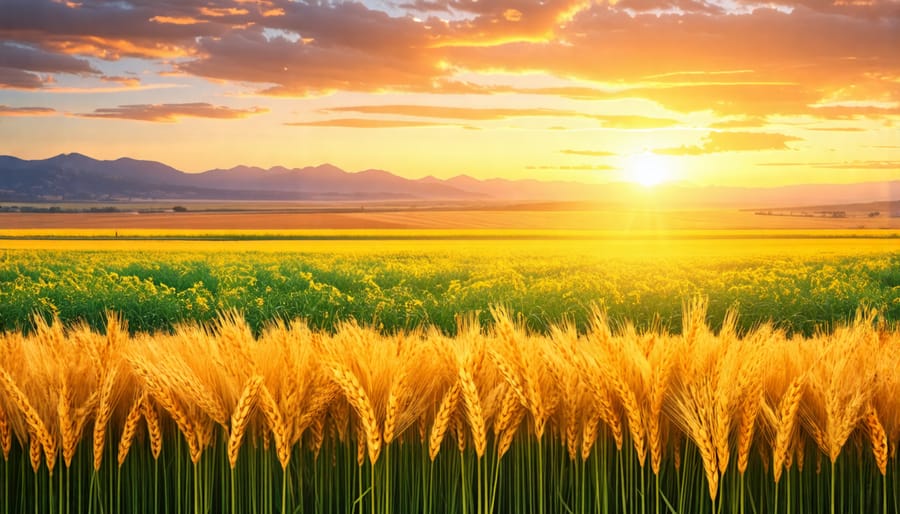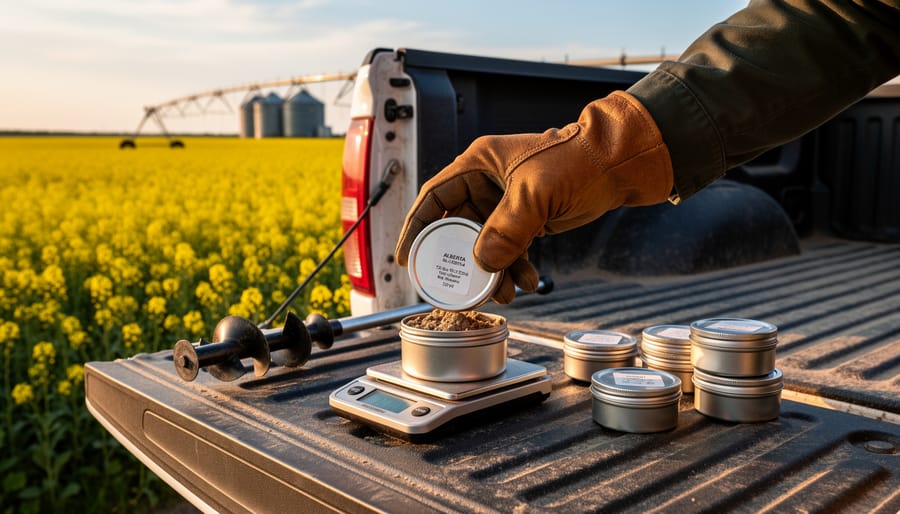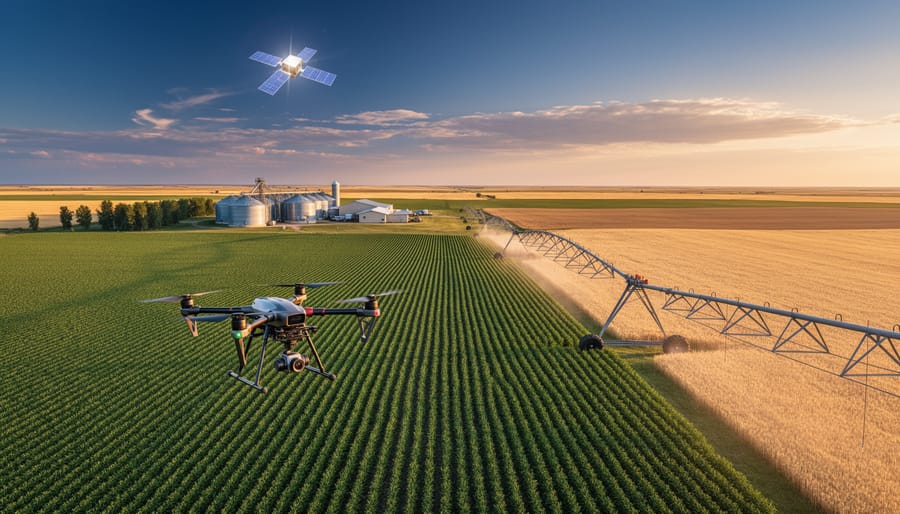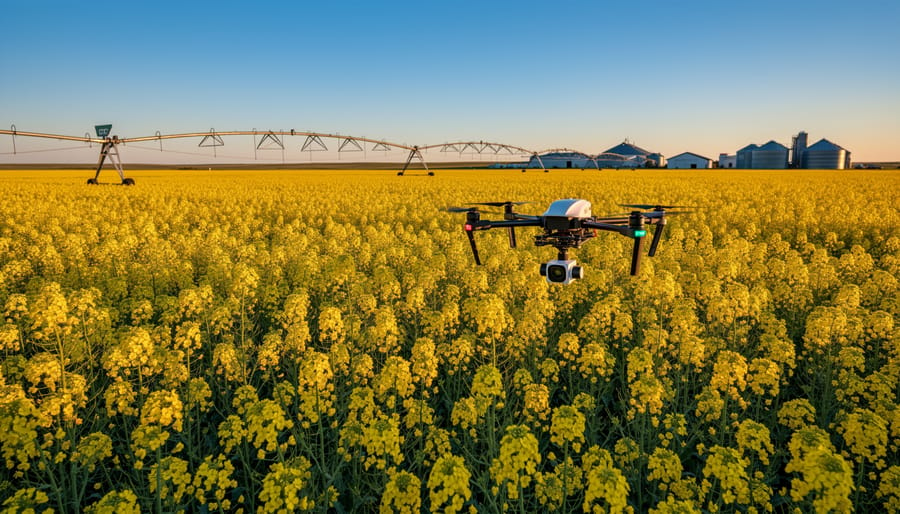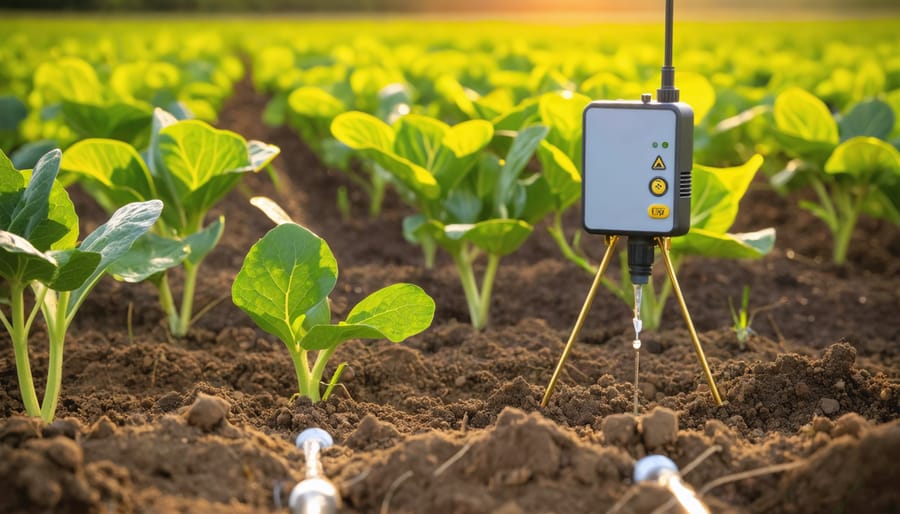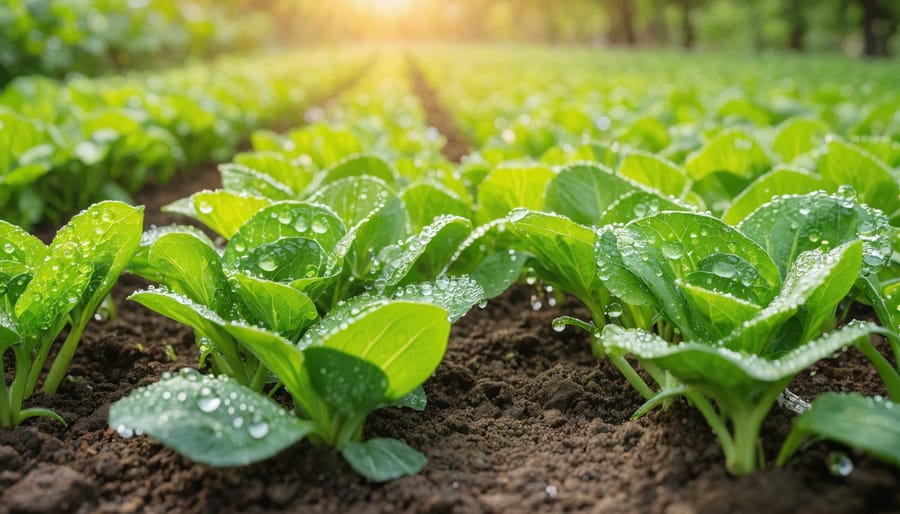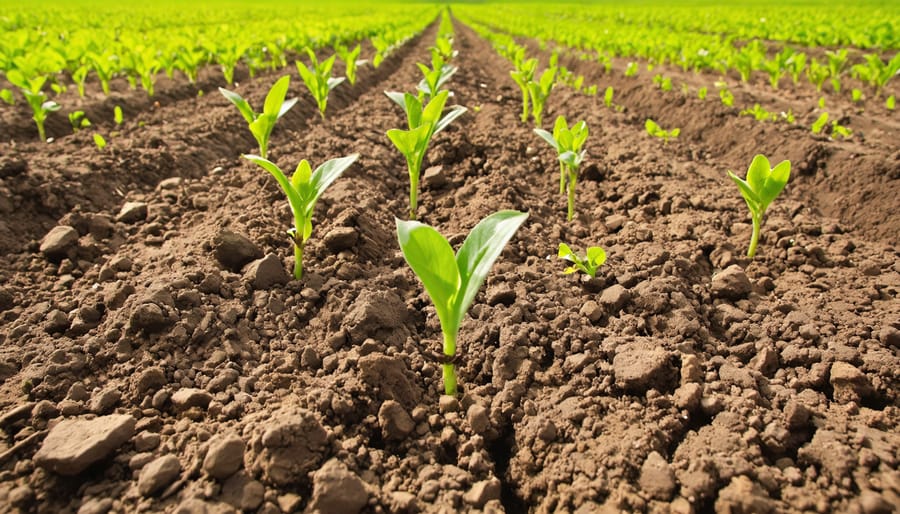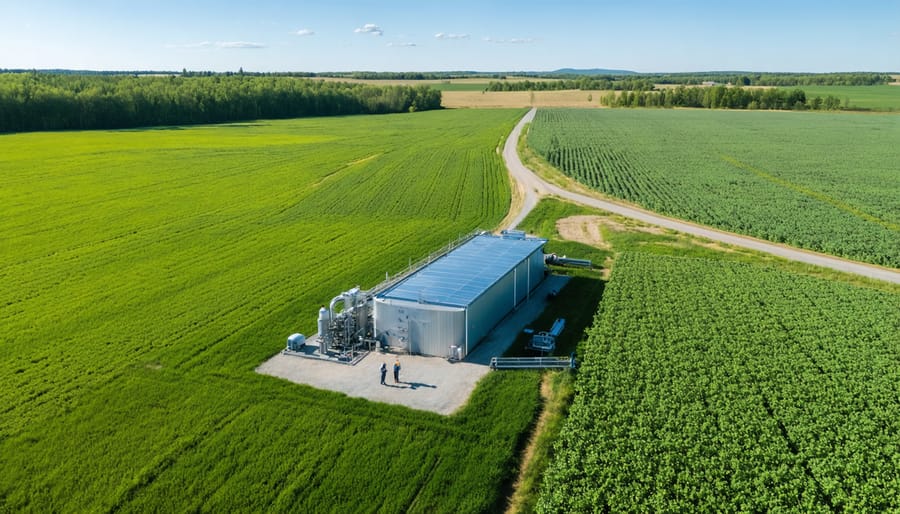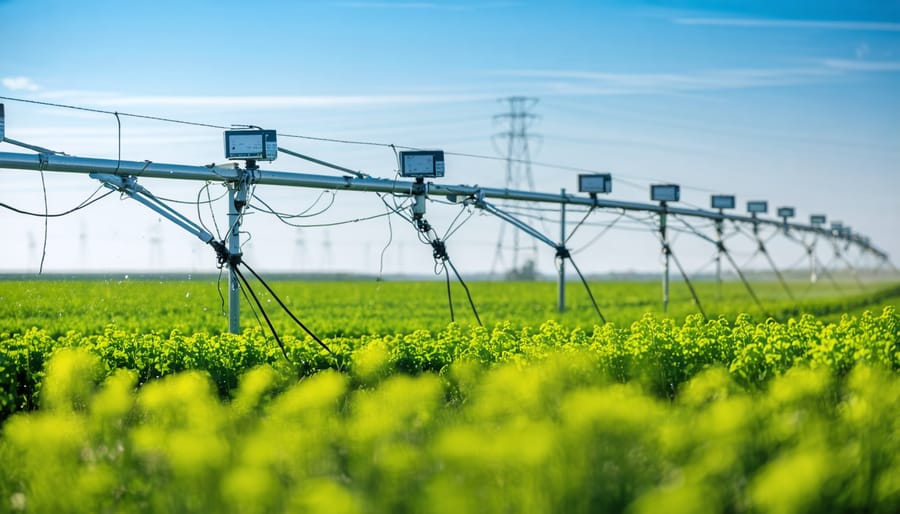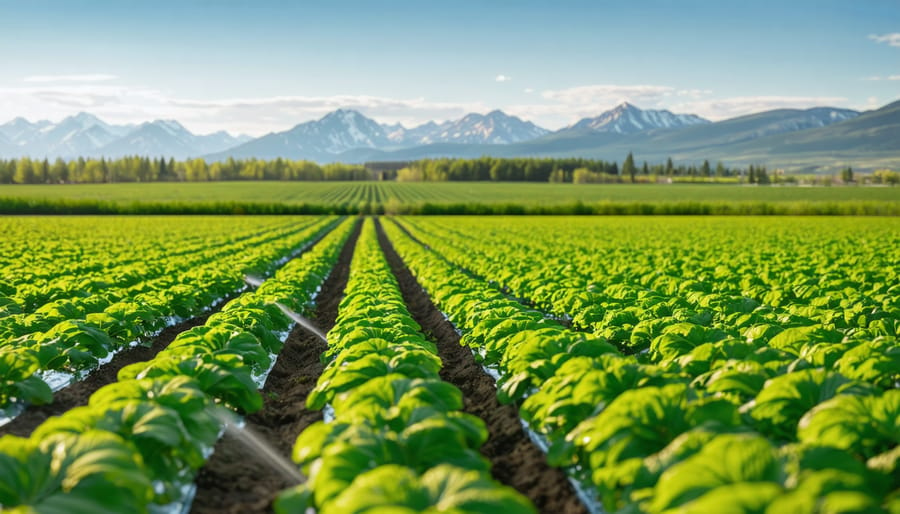Implement cover cropping to protect soil, reduce evaporation, and improve water infiltration. Adopt no-till or minimal tillage practices to preserve soil structure, organic matter, and moisture retention. Optimize irrigation scheduling and technology to apply water precisely when and where crops need it most. Embrace the principles of conservation agriculture – continuous soil cover, minimal soil disturbance, and crop diversification – to build resilient, water-efficient farming systems that protect our precious resources and ensure the long-term viability of Alberta’s agricultural heartland.
Adopting Drought-Resistant Crop Varieties
Adopting drought-resistant crop varieties is a powerful strategy for conserving water in agriculture, especially in regions like Alberta that face periodic droughts. These specially bred cultivars require less water to grow and thrive, making them well-suited to areas with limited water resources. Some examples of drought-tolerant crops that perform well in Alberta’s climate include certain varieties of wheat, barley, canola, and pulse crops like lentils and chickpeas.
The benefits of planting drought-resistant crops are numerous. They help farmers maintain yields and profitability during dry spells, reducing the need for expensive irrigation. This not only conserves water but also saves energy and lowers production costs. Drought-tolerant crops often have deeper root systems that improve soil structure and reduce erosion. They can also enhance biodiversity by providing habitat for beneficial insects and soil microorganisms.
For farmers interested in sourcing drought-resistant seed varieties, there are several options available in Alberta. The Alberta Seed Guide is an excellent resource that lists hundreds of crop varieties, including those with enhanced drought tolerance. Many local seed companies and distributors, such as SeedNet and CANTERRA SEEDS, offer a range of drought-tolerant options. It’s important to choose varieties that are well-adapted to your specific growing conditions and management practices.
When selecting drought-resistant crops, consider factors like maturity ratings, disease resistance, and end-use quality. Consult with experienced farmers, agronomists, and extension specialists to determine which varieties are best suited to your operation. With careful planning and the right seed choices, adopting drought-tolerant crops can be a key component of a successful water conservation strategy on your farm.

Implementing Efficient Irrigation Techniques
Drip Irrigation
Drip irrigation is a highly efficient watering method that delivers water directly to plant roots through a network of tubes, emitters, and valves. By targeting the root zone, drip irrigation minimizes evaporation and runoff, resulting in significant water savings compared to traditional sprinkler systems. Studies have shown that drip irrigation can reduce water usage by up to 60% while increasing crop yields. This precision watering approach also helps prevent soil erosion and nutrient leaching. Drip irrigation systems can be customized to suit various crop types and field layouts, making them adaptable for Alberta farmers looking to conserve water and improve their agricultural practices. With the ability to automate and fine-tune watering schedules based on soil moisture levels and weather conditions, drip irrigation offers a smart solution for sustainable water management in the face of increasing drought challenges.
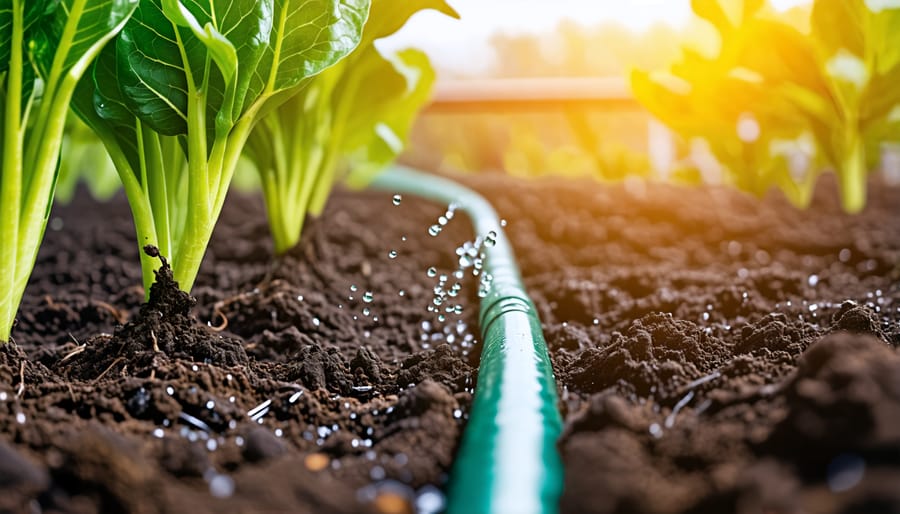
Precision Sprinklers
Precision sprinkler systems offer a highly efficient method for irrigating crops while minimizing water waste. These advanced systems use sophisticated technology to deliver water directly to plant roots in precise quantities based on real-time soil moisture levels, weather conditions, and crop requirements. By targeting water application, precision sprinklers can reduce overall water usage by up to 30% compared to traditional irrigation methods. This not only conserves precious water resources but also helps farmers save on energy costs associated with pumping and distributing water. Precision sprinklers are particularly beneficial in regions like Alberta, where water scarcity is a growing concern due to climate change and increasing agricultural demands. Implementing these systems allows farmers to maintain crop yields and quality while adapting to more stringent water regulations and drought conditions. As precision sprinkler technology continues to advance, it will play an increasingly crucial role in promoting sustainable agriculture practices across Canada.
Soil Moisture Sensors
Soil moisture sensors are valuable tools for optimizing irrigation scheduling in water conservation agriculture. By continuously monitoring soil moisture levels, these sensors help farmers determine the ideal times to irrigate their crops. When connected to automated irrigation systems, soil moisture sensors can trigger irrigation only when necessary, reducing water waste and promoting efficient use. This technology is particularly beneficial in Alberta, where variable precipitation patterns and the risk of drought make precise irrigation management crucial. By using soil moisture sensors, farmers can ensure their crops receive the right amount of water at the right time, leading to healthier plants, improved yields, and significant water savings.
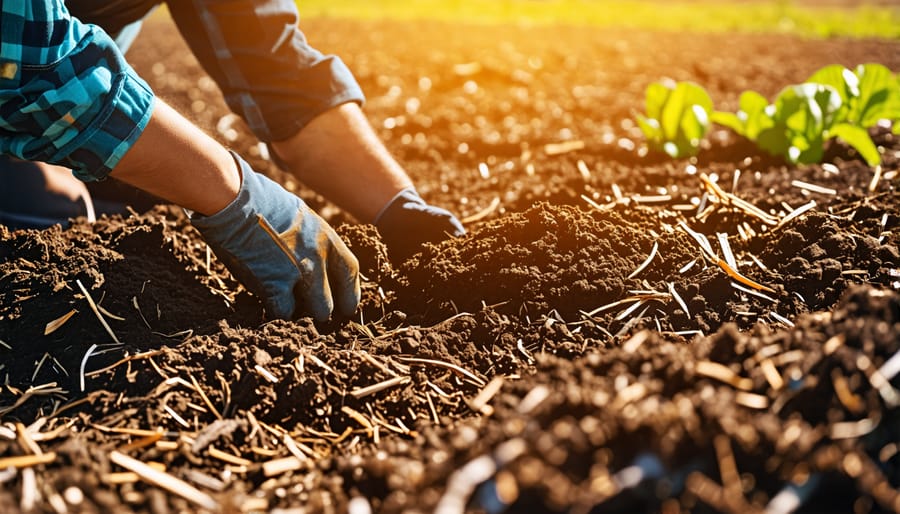
Mulching to Reduce Evaporation
Mulching is a highly effective water conservation technique that involves covering the soil surface with organic materials such as straw, hay, leaves, or compost. By creating a protective layer over the soil, mulch reduces evaporation and helps retain moisture for longer periods. This is particularly beneficial during hot, dry summers in Alberta when crops are most susceptible to drought stress.
For vegetable crops like tomatoes, peppers, and squash, a thick layer of straw or hay mulch around the base of the plants can significantly reduce water loss. Grain crops such as wheat and barley can benefit from leaving crop residues on the field after harvest, which act as a natural mulch. In orchards and vineyards, wood chips or shredded bark are excellent mulching options.
When applying mulch, aim for a layer that is 2-4 inches deep, depending on the material used. Be sure to keep the mulch a few inches away from the base of the plants to prevent rot and disease. Replenish the mulch as needed throughout the growing season to maintain its effectiveness.
By incorporating mulching into your water conservation agriculture practices, you can reduce evaporation, improve soil moisture retention, and create a more resilient cropping system in the face of Alberta’s variable climate. Experiment with different organic mulches to find the best fit for your specific crops and soil type, and share your experiences with fellow farmers to promote the adoption of this valuable technique.
Conservation Tillage Practices
Conservation tillage practices are gaining popularity among Alberta farmers as effective methods for preserving soil moisture and promoting water conservation in agriculture. No-till farming, a technique where crops are planted directly into the residue of the previous crop without disturbing the soil, has shown remarkable benefits in reducing water evaporation and improving soil structure. By minimizing soil disturbance, no-till farming helps maintain soil organic matter, enhances water infiltration, and reduces soil erosion during heavy rainfall events.
Reduced tillage, another conservation tillage approach, involves minimal soil disturbance while still allowing for some level of cultivation. This practice strikes a balance between preserving soil moisture and managing crop residue. Farmers who adopt reduced tillage often use specialized equipment like strip-tillers or low-disturbance seeders to prepare narrow planting strips while leaving the majority of the soil surface undisturbed.
The benefits of conservation tillage extend beyond water conservation. These practices can lead to improved soil health, increased biodiversity, and reduced fuel consumption due to fewer passes over the field. However, adopting conservation tillage methods also presents challenges. Farmers may need to invest in specialized equipment and adapt their management strategies to handle increased crop residue. Weed control can also be more complex in conservation tillage systems, requiring integrated pest management approaches.
Despite these challenges, many Alberta farmers are successfully implementing conservation tillage practices and reaping the rewards of improved water conservation and soil health. By sharing knowledge, experiences, and best practices within the farming community, more producers can confidently transition to these sustainable methods. With the right support and resources, conservation tillage can play a crucial role in building resilient and water-efficient agricultural systems in Alberta.
Capturing and Storing Runoff
Capturing and storing runoff water is a crucial aspect of water conservation agriculture, especially for Alberta farmers facing dry periods. One effective method is rainwater harvesting, which involves collecting and storing rainwater from rooftops, driveways, and other impervious surfaces. This collected water can then be used for irrigation, livestock watering, and other agricultural purposes during times of drought.
Another approach is the creation of retention ponds and small reservoirs on the farm. These structures capture and store runoff water from fields, pastures, and hillsides, allowing it to be used later when needed. By strategically placing these ponds and reservoirs, farmers can reduce soil erosion, improve water quality, and enhance wildlife habitat.
Successful implementations of these techniques can be found throughout Alberta. For example, a family farm near Lethbridge has installed a series of retention ponds along the contours of their fields, capturing runoff and preventing soil erosion. They’ve also incorporated a rainwater harvesting system on their barn, providing an additional source of water for their livestock during dry spells.
Another inspiring case study comes from a grain farm in the Peace River region. The farmers there have created a network of small reservoirs and ditches to capture and store spring meltwater. This stored water is then used to irrigate their crops during the growing season, reducing their reliance on groundwater and improving their resilience to drought.
By adopting these water conservation strategies, Alberta farmers can better manage their water resources, protect their soil, and ensure the long-term sustainability of their operations. With careful planning and implementation, capturing and storing runoff water can be a game-changer for farms facing the challenges of a changing climate.
Conclusion
In conclusion, water conservation agriculture is a vital approach for ensuring the long-term sustainability and resilience of Alberta’s agricultural sector. By adopting strategies such as conservation tillage, cover cropping, precision irrigation, and rainwater harvesting, farmers can significantly reduce their water consumption while maintaining or even improving crop yields. These water-saving strategies not only help farmers navigate periods of drought but also contribute to healthier soils, reduced erosion, and improved water quality.
As the climate continues to change and water scarcity becomes an increasingly pressing issue, it is crucial for Alberta farmers to start implementing these practices. By working together as a community and sharing knowledge and resources, we can build a more sustainable and resilient agricultural sector that will thrive for generations to come. We encourage all farmers to explore the water conservation techniques discussed in this article and to seek out further learning opportunities through local agricultural organizations and extension services. Together, we can ensure a vibrant and prosperous future for Alberta agriculture.

